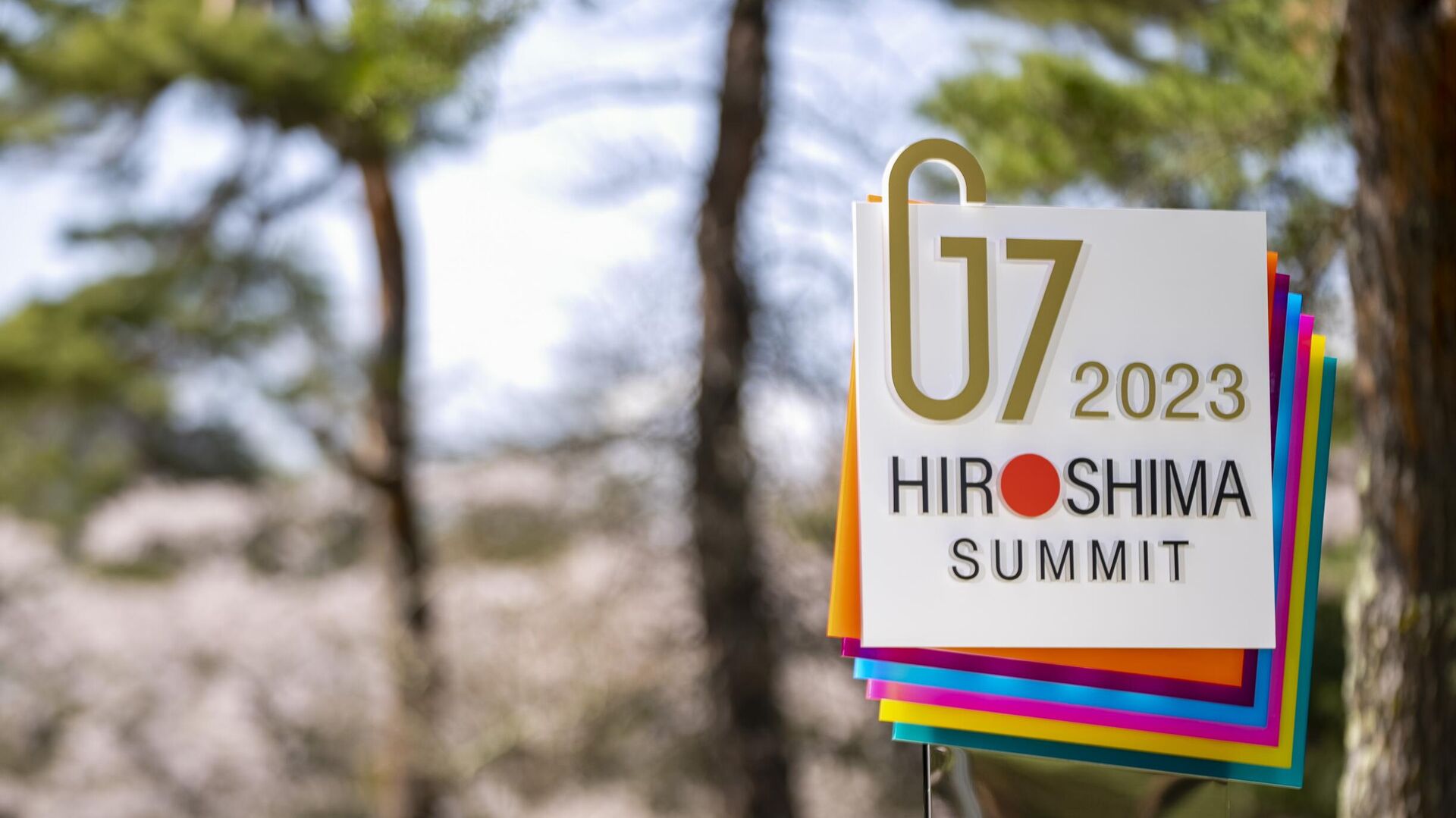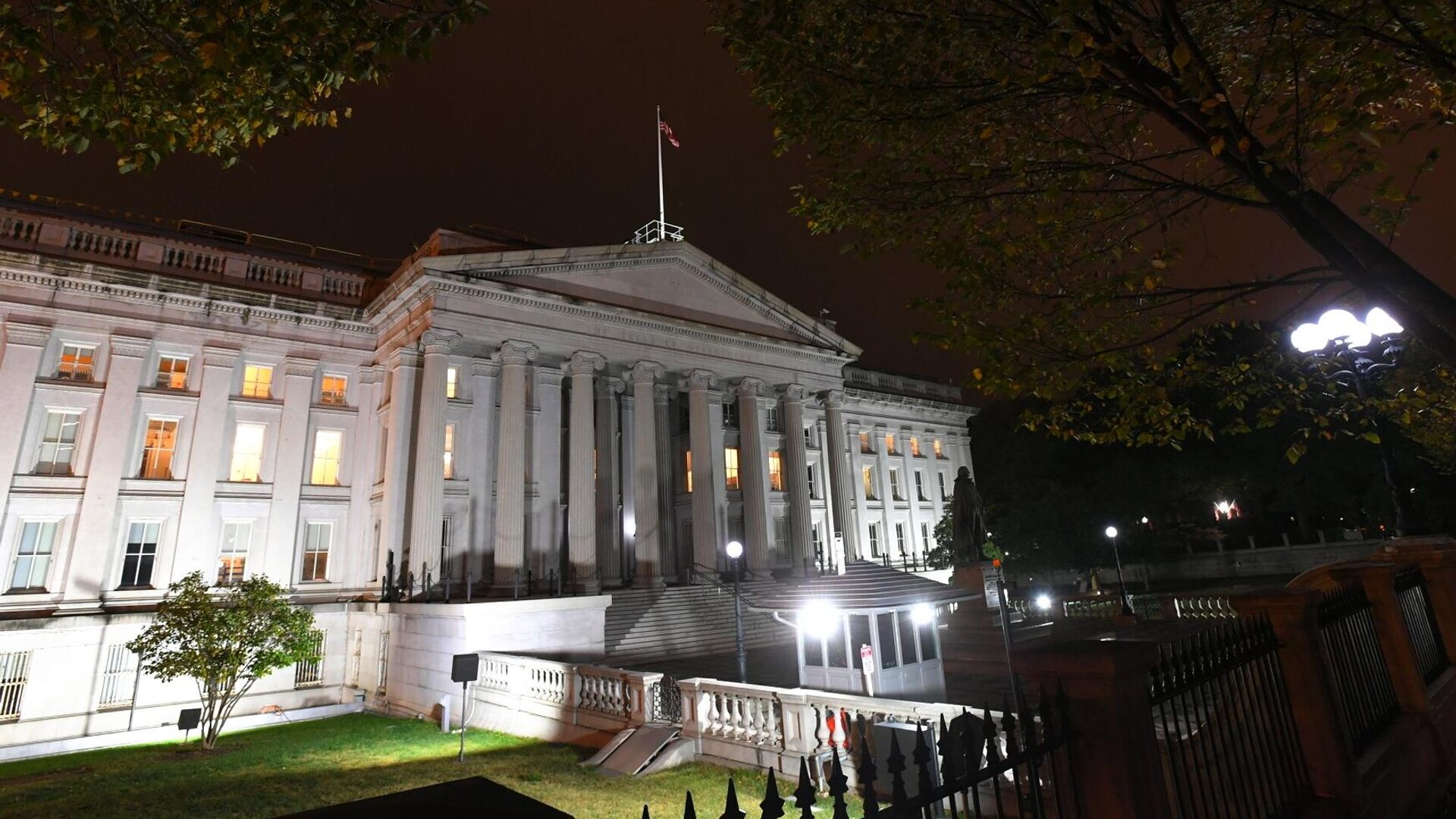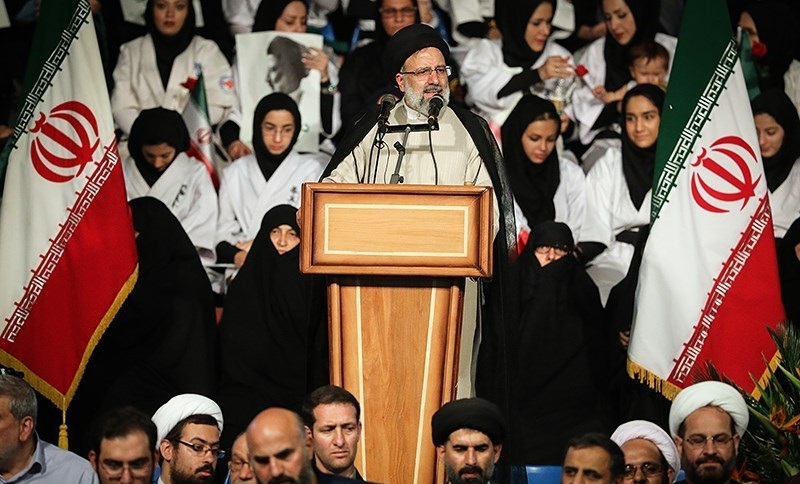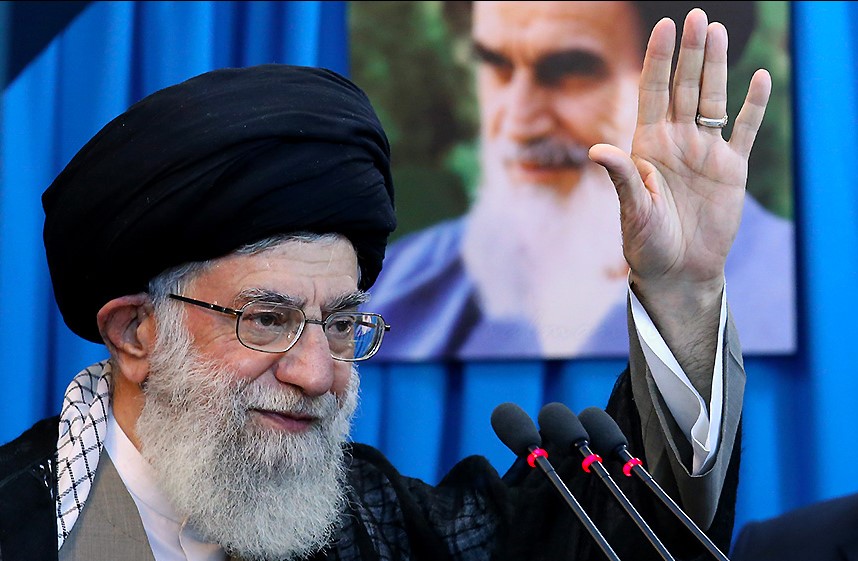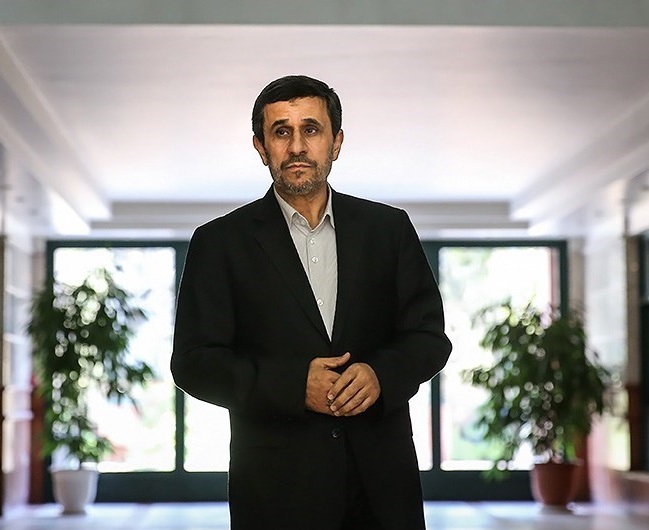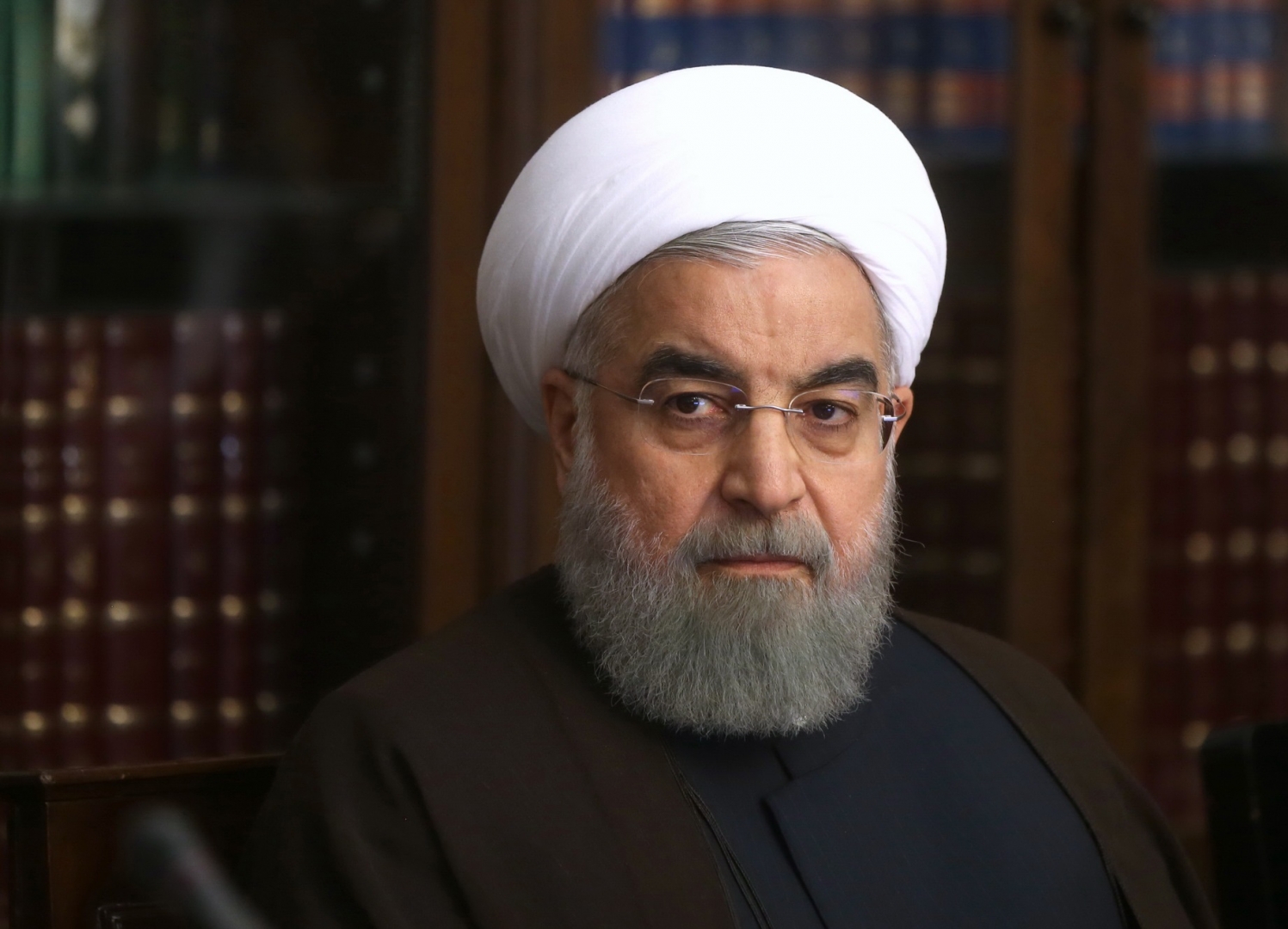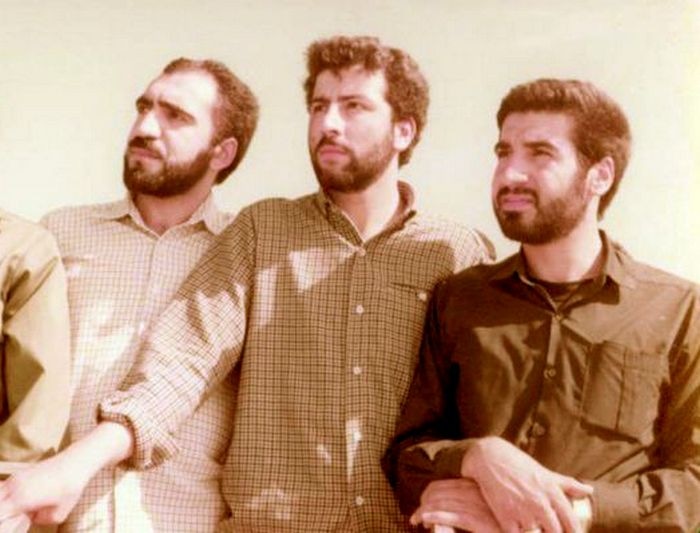https://ria.ru/20230521/iran-1873278491.html
МИД Ирана вызвал посла Швейцарии из-за поста в Twitter
МИД Ирана вызвал посла Швейцарии из-за поста в Twitter — РИА Новости, 21.05.2023
МИД Ирана вызвал посла Швейцарии из-за поста в Twitter
Иранский МИД в воскресенье вызвал посла Швейцарии Надине Лозано в знак протеста против вмешательства этой страны во внутренние дела Ирана, передает агентство… РИА Новости, 21.05.2023
2023-05-21T20:15
2023-05-21T20:15
2023-05-21T20:15
в мире
швейцария
иран
мид ирана
тегеран (город)
/html/head/meta[@name=’og:title’]/@content
/html/head/meta[@name=’og:description’]/@content
https://cdnn21.img.ria.ru/images/07e7/03/0a/1857030084_0:0:3072:1728_1920x0_80_0_0_54f6d12bac306ae49e4f6fbbd08ddaf6.jpg
МОСКВА, 21 мая – РИА Новости. Иранский МИД в воскресенье вызвал посла Швейцарии Надине Лозано в знак протеста против вмешательства этой страны во внутренние дела Ирана, передает агентство Tasnim. Ранее посольство Швейцарии в своем Twitter опубликовало сообщение, в котором осудило решение иранских властей казнить трех участников осенних протестов, вспыхнувших после смерти молодой иранки Махсы Амини, когда ее задержала полиция нравов. К тексту сообщения посольство прикрепило фотографию с кадрами протестов. В руках иранцев на фотографии, помимо портрета самой Амини, были государственные флаги Ирана полувековой давности, когда в этой стране правила монархическая династия Пехлеви. «В связи с вмешательством Швейцарии во внутренние дела нашей страны, а также нетрадиционным и непрофессиональным использованием посольства этой страны в Тегеране для публикации изображения с фальшивым флагом Исламской республики, сегодня госпожа Надине Лозано, посол Швейцарии в Тегеране, была вызвана в отдел Западной Европы министерства иностранных дел Ирана», — говорится в сообщении. Как отмечает агентство, в ходе встречи швейцарскому послу был выражен протест в связи с такой вызывающей публикацией флага.
https://ria.ru/20230520/iran-1873096669.html
https://ria.ru/20230519/sanktsii-1872998831.html
швейцария
иран
тегеран (город)
РИА Новости
internet-group@rian.ru
7 495 645-6601
ФГУП МИА «Россия сегодня»
https://xn--c1acbl2abdlkab1og.xn--p1ai/awards/
2023
РИА Новости
internet-group@rian.ru
7 495 645-6601
ФГУП МИА «Россия сегодня»
https://xn--c1acbl2abdlkab1og.xn--p1ai/awards/
Новости
ru-RU
https://ria.ru/docs/about/copyright.html
https://xn--c1acbl2abdlkab1og.xn--p1ai/
РИА Новости
internet-group@rian.ru
7 495 645-6601
ФГУП МИА «Россия сегодня»
https://xn--c1acbl2abdlkab1og.xn--p1ai/awards/
https://cdnn21.img.ria.ru/images/07e7/03/0a/1857030084_187:0:2918:2048_1920x0_80_0_0_16e2a5744e84bfb2e6a4b210826f0254.jpg
РИА Новости
internet-group@rian.ru
7 495 645-6601
ФГУП МИА «Россия сегодня»
https://xn--c1acbl2abdlkab1og.xn--p1ai/awards/
РИА Новости
internet-group@rian.ru
7 495 645-6601
ФГУП МИА «Россия сегодня»
https://xn--c1acbl2abdlkab1og.xn--p1ai/awards/
в мире, швейцария, иран, мид ирана, тегеран (город)
В мире, Швейцария, Иран, МИД Ирана, Тегеран (город)
МИД Ирана вызвал посла Швейцарии из-за поста в Twitter
МИД Ирана вызвал посла Швейцарии из-за вмешательства ее страны во внутренние дела Тегерана
МОСКВА, 21 мая – РИА Новости. Иранский МИД в воскресенье вызвал посла Швейцарии Надине Лозано в знак протеста против вмешательства этой страны во внутренние дела Ирана, передает агентство Tasnim.
Ранее посольство Швейцарии в своем Twitter опубликовало сообщение, в котором осудило решение иранских властей казнить трех участников осенних протестов, вспыхнувших после смерти молодой иранки Махсы Амини, когда ее задержала полиция нравов. К тексту сообщения посольство прикрепило фотографию с кадрами протестов. В руках иранцев на фотографии, помимо портрета самой Амини, были государственные флаги Ирана полувековой давности, когда в этой стране правила монархическая династия Пехлеви.
Страны «Большой семерки» призвали Иран перестать поддерживать Россию
«В связи с вмешательством Швейцарии во внутренние дела нашей страны, а также нетрадиционным и непрофессиональным использованием посольства этой страны в Тегеране для публикации изображения с фальшивым флагом Исламской республики, сегодня госпожа Надине Лозано, посол Швейцарии в Тегеране, была вызвана в отдел Западной Европы министерства иностранных дел Ирана», — говорится в сообщении.
Как отмечает агентство, в ходе встречи швейцарскому послу был выражен протест в связи с такой вызывающей публикацией флага.
Под новые антироссийские санкции США попали китайские и иранские компании
|
Высший руководитель (Рахбар)
Аятолла Сейед Али Хосейни Хаменеи
https://khamenei.ir/ |
||
|
Президент Исламской Республики Иран
Сейид Эбрахим Раиси
https://raisi.ir/ |
||
|
|
Первый Вице-президент Исламской Республики Иран Доктор Мохаммад Мохбер
|
|
|
Министр просвещения и Доктор Юнес Нури
|
Глава Офиса Президента Доктор Голам Хоссейн Исмаили
|
Министр связи и Доктор Иса Зарепур |
|
Министр экономики и финансов
|
Министр информации
|
Пресс-секретарь и секретарь
|
|
Заместитель Президента и глава
|
Министр здравоохранения
|
Заместитель Президента
|
|
Министр кооперации, труда
|
Заместитель Президента и глава
|
Министр сельскохозяйственного
|
|
Заместитель Президента и глава
|
Министр иностранных дел
|
Заместитель Президента и глава
|
|
Министр юстиции
|
Заместитель Президента
|
Министр обороны и поддержки
|
|
Заместитель Президента
|
Министр транспорта и городского развития
|
Заместитель Президента
|
|
Министр промышленности,
|
Заместитель Президента и глава
|
Министр науки, исследований и технологий
|
|
Заместитель Президента по науке,
|
Министр культуры и исламской ориентации
|
Министр страны Доктор Ахмед Вахиди
|
|
Министр культурного наследия,
|
Министр нефти Джавад Оуджи
|
Министр энергетики
|
|
Министр спорта и молодежи
|
From Wikipedia, the free encyclopedia
| Supreme Leader of the Islamic Republic of Iran |
|
|---|---|

Emblem of Iran |
|
|
Incumbent |
|
| Office of the Supreme Leader | |
| Status | Head of State |
| Reports to | Assembly of Experts |
| Residence | House of Leadership |
| Seat | Tehran |
| Appointer | Assembly of Experts |
| Term length | Life tenure[1] |
| Constituting instrument | Constitution of Iran |
| Precursor | Shah of Iran |
| Formation | 3 December 1979 |
| First holder | Ruhollah Khomeini |
| Website | www.leader.ir |
The Supreme Leader of Iran (Persian: رهبر معظم ایران, romanized: Rahbar-e Moazam-e Irân (listen)), also referred to as Supreme Leader of the Islamic Revolution[2] (رهبر معظم انقلاب اسلامی, Rahbar-e Moazam-e Enqelâb-e Eslâmi), but officially called the Supreme Leadership Authority (مقام معظم رهبری, Maqâm Moazam Rahbari), is the head of state and the highest political and religious authority of the Islamic Republic of Iran (above the president). The armed forces, judiciary, state television, and other key government organisations such as Guardian Council and Expediency Discernment Council are subject to the Supreme Leader.[3][4] According to the constitution, the Supreme Leader delineates the general policies of the Islamic Republic (article 110), supervising the legislature, the judiciary, and the executive branches (article 57).[5] The current lifetime officeholder, Ali Khamenei, has issued decrees and made the final decisions on the economy, the environment, foreign policy, education, national planning, and other aspects of governance in Iran.[6][7][8][9][10][11][12][13] Khamenei also makes the final decisions on the amount of transparency in elections,[14] and has dismissed and reinstated presidential cabinet appointees.[15] The Supreme Leader is legally considered «inviolable», with Iranians being routinely punished for questioning or insulting him.[16][17][18][19]
The office was established by the Constitution of Iran in 1979, pursuant to Ayatollah Ruhollah Khomeini’s concept of the Guardianship of the Islamic Jurist,[20] and is a lifetime appointment. Originally the constitution required the Supreme Leader to be Marja’-e taqlid, the highest-ranking cleric in the religious laws of Usuli Twelver Shia Islam. In 1989, however, the constitution was amended and simply asked for Islamic «scholarship» to allow the Supreme Leader to be a lower-ranking cleric.[21][22] As the Guardian Jurist (Vali-ye faqih), the Supreme Leader, guides the country, protecting it from heresy and imperialist predations, and ensuring the laws of Islam are followed. The style «Supreme Leader» (Persian: رهبر معظم, romanized: rahbar-e mo’azzam) is commonly used as a sign of respect although the Constitution designates them simply as «Leader» (رهبر, rahbar). According to the constitution (Article 111), the Assembly of Experts is tasked with electing (following Ayatollah Khomeini), supervising, and dismissing the Supreme Leader. In practice, the Assembly has never been known to challenge or otherwise publicly oversee any of the Supreme Leader’s decisions[23] (all of its meetings and notes are strictly confidential).[24] Members of the Assembly are chosen by bodies (the Guardian Council) whose members are appointed by the Supreme Leader or appointed by an individual (Chief Justice of Iran) appointed by the Supreme Leader.
In its history, the Islamic Republic of Iran only has had two Supreme Leaders: Khomeini, who held the position from 1979 until his death in 1989 and Ali Khamenei, who has held the position for 30+ years since Khomeini’s death.
Mandate and status[edit]
The Supreme Leader of Iran is elected by the Assembly of Experts (مجلس خبرگان, Majles-e Khobregan), which is also the only government body in charge of choosing and dismissing Supreme Leaders of Iran.[25]
The Supreme Leader is the commander-in-chief of the armed forces and the provisional[citation needed] head of the three branches of the state (the Judiciary, the Legislature, and the Executive).
He oversees, appoints (or inaugurates) and can dismiss the following offices:
- Inaugurates the President and may also together with a two-thirds majority of the Parliament impeach him.
- The Chief Justice of Iran (Head of the Judiciary Branch (Persian: قوه قضائیه) usually a member of the Assembly of Experts) for a term of 8 years,
- the members of the Expediency Discernment Council for a term of 5 years.
- the members of Supreme Council of the Cultural Revolution.
- 6 of the 12 members of the Guardian Council from among the members of the Assembly of Experts, the other 6 are chosen by the Parliament out of Islamic jurist candidates nominated by the Chief Justice of Iran who is in turn appointed by the Supreme Leader.[26][27]
- ministers of defense, intelligence, foreign affairs, interior and science.
- two personal representatives to the Supreme National Security Council.[28]
- Can delegate representatives to all branches of government. Ali Khamenei has currently around 2000 representatives.[29]
- the head of the National Radio and Television Institution IRIB for a term of 8 years
- the head of the Foundation of Martyrs and Veterans Affairs
- the Imams of the Friday Prayer of each Province Capital (with the advice of all the Marja’) for a lifetime
- Armed Forces of the Islamic Republic of Iran
- the Commander of the Armed Forces of the Islamic Republic of Iran
- the Commander of the Islamic Republic of Iran Army
- the Commander of the Islamic Republic of Iran Navy
- the Commander of the Islamic Republic of Iran Air Force
- the Commander of the Islamic Republic of Iran Air Defense Force
- Islamic Revolutionary Guard Corps (IRGC)
- the Commander of the IRGC
- the Commander of the IRGC Ground Forces
- the Commander of the IRGC Navy
- the Commander of the IRGC Aerospace Force
- the Commander of the IRGC Quds Force
- the Commander of the Basij Organization
- the Commander of the Law Enforcement Force
- the Heads of the Counter Intelligence Units
- the Heads of the Intelligence Units
- approves elected members of the Assembly of Experts.[30][31]
Iran’s regional policy is directly controlled by the office of the Supreme Leader with the Ministry of Foreign Affairs’ task limited to protocol and ceremonial occasions. All of Iran’s ambassadors to Arab countries, for example, are chosen by the Quds Force, which directly reports to the Supreme Leader.[13]
According to the constitution, all Supreme Leaders (following Ayatollah Khomeini) are to be elected by the Assembly of Experts who are elected by Iranian voters to eight year terms.
However, all candidates for membership at the Assembly of Experts (along with candidates for President and for the Majlis (parliament)) must have their candidacy approved by the Guardian Council (in 2016 166 candidates were approved by the Guardians out of 801 who applied to run for the office),[32] whose members in turn, are half appointed unilaterally by the Supreme Leader and half subject to confirmation by the Majlis after being appointed by the head of the Iranian judiciary (Chief Justice of Iran), who is himself appointed by the Supreme Leader.[33] Thereby, the Assembly has never questioned the Supreme Leader.[23] There have been cases where incumbent Ali Khamenei publicly criticized members of the Assembly, resulting in their arrest and subsequent removal. There also have been cases where the Guardian Council repealed its ban on particular people after being directed to do so by Khamenei.[34] The Supreme Leader is legally considered «inviolable», with Iranians being routinely punished for questioning or insulting him.[35][36][37][38]
Incorporation in the Constitution[edit]
1979[edit]
In March 1979, shortly after Ruhollah Khomeini’s return from exile and the overthrow of Iran’s monarchy, a national referendum was held throughout Iran with the question «Islamic Republic, yes or no?».[39] Although some groups objected to the wording and choice and boycotted the referendum, 98% of those voting voted «yes».[39] Following this landslide victory, the constitution of Iran of 1906 was declared invalid and a new constitution for an Islamic state was created and ratified by referendum during the first week of December in 1979. According to Francis Fukuyama, the 1979 constitution is a «hybrid» of «theocratic and democratic elements» with much of it based on the ideas Khomeini presented in his published book Islamic Government: Governance of the Jurist (Hukumat-e Islami).[40] In the work, Khomeini argued that government must be run in accordance with traditional Islamic sharia, and for this to happen a leading Islamic jurist (faqih) must provide political «guardianship» (wilayat or velayat) over the people. The leading jurist were known as Marja’.
The Constitution stresses the importance of the clergy in government, with Article 4 stating that
all civil, criminal, financial, economic, administrative, cultural, military, political, and all other statutes and regulations (must) be keeping with Islamic measures;…the Islamic legal scholars of the watch council (Shura yi Nigahban) will keep watch over this.[41]
and the importance of the Supreme Leader. Article 5 states
during the absence of the removed Twelfth Imam (may God hasten his reappearance) government and leadership of the community in the Islamic Republic of Iran belong to the rightful God fearing legal scholar (Faqih) who is recognized and acknowledged as the Islamic leader by the majority of the population.
Article 107 in the constitution mentions Khomeini by name and praises him as the most learned and talented leader for emulation (marja-i taqlid). The responsibilities of the Supreme Leader are vaguely stated in the constitution, thus any ‘violation’ by the Supreme Leader would be dismissed almost immediately. As the rest of the clergy governed affairs on a daily basis, the Supreme Leader is capable of mandating a new decision as per the concept of Vilayat-e Faqih.[42]
The Supreme Leader does not receive a salary.[43]
1989[edit]
Shortly before Khomeini’s death a change was made in the constitution allowing a lower ranking Shia cleric to become Supreme Leader. Khomeini had a falling out with his successor Hussein-Ali Montazeri who disapproved of human rights abuses by the Islamic Republic[44] such as the mass execution of political prisoners in late summer and early autumn 1988. Montazeri was demoted as a marja and Khomeini chose a new successor, a relatively low-ranking member of the clergy, Ali Khamene’i. However Article 109 stipulated that the leader be «a source of imitation» (Marja-e taqlid). Khomeini wrote a letter to the president of the Assembly for Revising the Constitution, which was in session at the time, making the necessary arrangements to designate Khamene’i as his successor, and Article 109 was revised accordingly.[45] «Khomeini is supposed to have written a letter to the Chairman of the assembly of Leadership Experts on 29.4.89 in which he emphasised that he had always been of the opinion that the marja’iyat was not a requirement for the office of leader.[45]
Guardianship of the Islamic Jurist (Velayat-e faqih)[edit]
The constitution of Iran combines concepts of both democracy and theocracy, theocracy in the form of Khomeini’s concept of vilayat-e faqih (Guardianship of the Islamic Jurist), as expressed in the Islamic Republic. According to Ayatollah Khomeini, the Guardianship of the Islamic Jurist was not restricted to orphans or mental incompetents, but applied to everyone in absence of the twelfth Imam. Jurists were the only rightful political/governmental leaders because «God had commanded Islamic government» and «no one knew religion better than the ulama» (Islamic clergy).[46] They alone would preserve «Islamic order» and keep everyone from deviating from «the just path of Islam».[47] Prior to the revolution observant Shia Muslims selected their own leading faqih to emulate (known as a Marja’-i taqlid) according to their own decision making. The «congregation rather than the hierarchy decided how prominent the ayatollah was» thus allowing the public to possibly limit the influence of the Faqih.[46]
After the revolution Shia Muslims (or at least Iranian Shia) were commanded to show allegiance to the current vali-e faghih, Guardian Jurist or Supreme Leader. In this new system, the jurist oversaw all governmental affairs. The complete control exercised by the Faqih was not to be limited to the Iranian Revolution because the revolution and its Leader had international aspirations. As the constitution of the Islamic Republic states, it
intends to establish an ideal and model society on the basis of Islamic norms. … the Constitution provides the necessary basis for ensuring the continuation of the Revolution at home and abroad. In particular, in the development of international relations, the Constitution will strive with other Islamic and popular movements to prepare the way for the formation of a single world community (in accordance with the Koranic verse ‘This your community is a single community, and I am your Lord, so worship Me’ [21:92]), and to assure the continuation of the struggle for the liberation of all deprived and oppressed peoples in the world.[41]
According to author Seyyed Vali Nasr, Khomeini appealed to the masses, during the pre-1979 period, by referring to them as the oppressed and with charisma and political ability was tremendously successful. He became a very popular role model for Shiites and hoped for the Iranian Revolution to be the first step to a much larger Islamic revolution, transcending Shia Islam, in the same way that Vladimir Lenin and Leon Trotsky wanted their revolution to be a world revolution, not just a Russian one.[48]
Functions, powers, and duties of the Supreme Leader[edit]
Duties and Powers given to the Supreme Leader by the Constitution, decrees and other laws are:
- Delineation of the general policies of the Islamic Republic of Iran in consultation with the Nation’s Expediency Discernment Council.
- Supervision over the proper execution of the general policies of the systems.
- Resolving conflicts between the three branches of the government[49]
- Issuing decrees for national referendums.
- Supreme command over the Armed Forces.
- Declaration of war and peace, and the mobilization of the armed forces.[31]
- Ability to veto laws passed by the parliament.[28][50]
- Appointment, dismissal, and acceptance of resignation of:
- the members of Expediency Discernment Council.
- the members of Supreme Council of the Cultural Revolution.
- two personal representatives to the Supreme National Security Council.[28]
- Can delegate representatives to all branches of government. Ali Khamenei has currently around 2000 representatives.[29]
- the six fuqaha’ of the Guardian Council.
- the supreme judicial authority of the country.
- ministers of defense, intelligence, foreign affairs, and science.
- the head of the radio and television network of the Islamic Republic of Iran.
- the chief of the joint staff.
- the chief commander of the armed forces of the country
- the highest commanders of the armed forces.
- Can dismiss and reinstate ministers.[51][15][52]
- Resolving differences between the three wings of the armed forces and regulation of their relations.
- Resolving the problems, which cannot be solved by conventional methods, through the Nation’s Expediency Discernment Council.
- Signing the decree formalizing the elections in Iran for the President of the Republic by the people.
- Dismissal of the President of the Republic, with due regard for the interests of the country, after the Supreme Court holds him guilty of the violation of his constitutional duties, or after an impeachment vote of the Islamic Consultative Assembly (Parliament) testifying to his incompetence on the basis of Article 89 of the Constitution.
- Pardoning or reducing the sentences of convicts, within the framework of Islamic criteria, on a recommendation (to that effect) from the head of the Judiciary. The Supreme Leader may delegate part of his duties and powers to another person.
- Confirms decisions of the Supreme National Security Council.[53]
- Control over Special Clerical Court.[54]
List of supreme leaders[edit]
| No. | Supreme Rule | Portrait | Name English · Persian · Signature |
Lifespan | Place of birth | Notes |
|---|---|---|---|---|---|---|
| 1 | 3 December 1979[note 1] – 3 June 1989 (9 years, 182 days) |
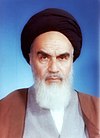
|
The Ayatollah Imam Sayyid Ruhollah Khomeini سیدروحالله خمینی 
|
17 May 1900 – 3 June 1989 (aged 89)[55] | Khomeyn, Markazi Province | Leader of the 1979 Iranian Revolution,[56] and founder of the Islamic Republic of Iran.[57] |
| 2 | 4 June 1989 – present (33 years, 351 days) |

|
The Ayatollah Imam Sayyid Ali Khamenei سیدعلی خامنهای |
16 July 1939 (age 83)[58] | Mashhad, Razavi Khorasan Province | Previously served as President of Iran from 1981 until Khomeini’s death.[59] |
The Vice Supreme Leader[edit]
Iranian vice supreme leader role (Deputy Supreme leader) was incorporated into the authority of the supreme leader.
- Ayatollah Hussein-Ali Montazeri (10 November 1985 – 13 March 1989)[60][61]
During the presidency of Hassan Rouhani, amid longstanding rumors of Khamenei’s declining health, it was recommended to Khamenei to reestablish the office of deputy supreme leader to transition towards new leadership better.[62]
Future leader[edit]
See also[edit]
- List of heads of state of Iran
- List of provincial representatives appointed by Supreme Leader of Iran
- Execution of Imam Khomeini’s Order
- Constitution of the Islamic Republic of Iran
- Death and state funeral of Ruhollah Khomeini
- 1989 Iranian Supreme Leader election
- List of members in the Fifth Term of the Council of Experts
Notes[edit]
- ^ His title was Leader of the Revolution from 5 February 1979 until 3 December 1979.
References[edit]
- ^ «Iran’s possible next Supreme Leader being examined: Rafsanjani». Reuters. 13 December 2015. Archived from the original on 16 December 2015. Retrieved 1 July 2016.
- ^ Article 89-91, Iranian Constitution
- ^ «Who’s in Charge?» by Ervand Abrahamian London Review of Books, 6 November 2008
- ^ mshabani (23 October 2017). «Did Khamenei block Rouhani’s science minister?». Archived from the original on 24 October 2017.
- ^ «Constitution of the Islamic Republic of Iran (full text)». shora-gc.ir. 2 June 2021. Retrieved 13 October 2022.
- ^ «Iran’s Khamenei hits out at Rafsanjani in rare public rebuke». Middle East Eye. Archived from the original on 2016-04-04. Retrieved 2017-02-15.
- ^ «Khamenei says Iran must go green — Al-Monitor: the Pulse of the Middle East». Al-Monitor. Archived from the original on 2015-12-22.
- ^ Louis Charbonneau and Parisa Hafezi (16 May 2014). «Exclusive: Iran pursues ballistic missile work, complicating nuclear talks». Reuters. Archived from the original on 31 July 2017. Retrieved 2 July 2017.
- ^ «IranWire — Asking for a Miracle: Khamenei’s Economic Plan». Archived from the original on 2016-03-07. Retrieved 2016-03-06.
- ^ kjenson (22 May 2014). «Khamenei outlines 14-point plan to increase population». Archived from the original on 1 August 2017.
- ^ «Iran: Executive, legislative branch officials endorse privatisation plan». www.payvand.com. Archived from the original on 2017-01-05. Retrieved 2017-02-15.
- ^ «Khamenei slams Rouhani as Iran’s regime adopted UN education agenda». 8 May 2017. Archived from the original on 31 May 2017. Retrieved 3 June 2017.
- ^ a b Al-awsat, Asharq (25 September 2017). «Khamenei Orders New Supervisory Body to Curtail Government — ASHARQ AL-AWSAT English Archive». Archived from the original on 10 October 2017. Retrieved 26 September 2017.
- ^ «Leader outlines elections guidelines, calls for transparency». 15 October 2016. Archived from the original on 12 June 2018. Retrieved 15 February 2017.
- ^ a b «BBC NEWS — Middle East — Iranian vice-president ‘sacked’«. 2009-07-25. Archived from the original on 2018-10-03. Retrieved 2017-02-15.
- ^ «Iran arrests 11 over SMS Khomeini insults». GlobalPost. Archived from the original on 14 March 2016.
- ^ «Iran arrests 11 over SMS Khomeini insults: report». The Daily Star. 22 September 2017. Archived from the original on 5 February 2017. Retrieved 4 February 2017.
- ^ «Poet to Serve Two Years in Prison For Criticizing Iran’s Supreme Leader». December 30, 2017. Archived from the original on January 12, 2020. Retrieved December 8, 2019.
- ^ Vahdat, Ahmed (March 19, 2019). «Iranian dissident ordered to copy out books by Ayatollah Khamenei after branding Supreme Leader a despot». The Telegraph. Archived from the original on May 14, 2019. Retrieved May 14, 2019 – via www.telegraph.co.uk.
- ^ Article 5, Iranian Constitution
- ^ Moin, Baqer, Khomeini, (2001), p.293
- ^ «Article 109 [Leadership Qualifications]
(1) Following are the essential qualifications and conditions for the Leader:
a. Scholarship, as required for performing the functions of the religious leader in different fields. - ^ a b «Everything you need to know about Iran’s Assembly of Experts election». 30 November 2001. Archived from the original on 22 April 2016. Retrieved 1 July 2016.
- ^ «Iran Announces Second Extension of Voting,» Reuters, 23 October 1998. quoted in Wright, Robin (2001). The Last Great Revolution: Turmoil and Transformation in Iran. Knopf Doubleday Group. p. 317 note 26. ISBN 9780307766076. Retrieved 13 October 2022.
- ^ «The Assembly of Experts — The Iran Primer». iranprimer.usip.org. Archived from the original on 7 July 2018. Retrieved 1 September 2018.
- ^ «خانه ملت» (in Persian). 5 July 2009. Archived from the original on 5 July 2009.
- ^ «Iranian Government Constitution, English Text». 17 June 2011. Archived from the original on 17 June 2011.
- ^ a b c Brumberg, Daniel; Farhi, Farideh (4 April 2016). Power and Change in Iran: Politics of Contention and Conciliation. Indiana University Press. ISBN 9780253020796. Archived from the original on 24 June 2021. Retrieved 21 November 2020 – via Google Books.
- ^ a b «Inside Iran — The Structure Of Power In Iran | Terror And Tehran | FRONTLINE | PBS». www.pbs.org. Archived from the original on 7 May 2019. Retrieved 9 January 2018.
- ^ (see Article 108 of the constitution)
- ^ a b Tschentscher, Axel. «ICL — Iran — Constitution». www.servat.unibe.ch. Archived from the original on 21 August 2018. Retrieved 11 August 2010.
- ^ «Elections in Iran: The great candidate cull: Choose any candidate you like—after the mullahs have excluded reformers». The Economist. 20 February 2016. Retrieved 20 February 2016.
- ^ Reuters (14 December 2015). «Rafsanjani breaks taboo over selection of Iran’s next supreme leader». TheGuardian.com. Archived from the original on 18 December 2016. Retrieved 1 July 2016.
- ^ Staff and agencies (24 May 2005). «Iran reverses ban on reformist candidates». TheGuardian.com. Archived from the original on 21 December 2016. Retrieved 1 July 2016.
- ^ «Iran arrests 11 over SMS Khomeini insults». GlobalPost. Archived from the original on 14 March 2016.
- ^ «Iran arrests 11 over SMS Khomeini insults: report». The Daily Star. 22 September 2017. Archived from the original on 5 February 2017. Retrieved 4 February 2017.
- ^ «Poet to Serve Two Years in Prison For Criticizing Iran’s Supreme Leader». December 30, 2017. Archived from the original on January 12, 2020. Retrieved December 8, 2019.
- ^ Vahdat, Ahmed (March 19, 2019). «Iranian dissident ordered to copy out books by Ayatollah Khamenei after branding Supreme Leader a despot». The Telegraph. Archived from the original on May 14, 2019. Retrieved May 14, 2019 – via www.telegraph.co.uk.
- ^ a b Duality by Design: The Iranian Electoral System Archived 2016-05-03 at the Wayback Machine By Yasmin Alem
- ^ Fukuyama, Francis (July 27, 2009). «Iran, Islam and the Rule of Law». Wall Street Journal. Archived from the original on October 27, 2017. Retrieved August 8, 2017.
- ^ a b «ICL — Iran — Constitution». Archived from the original on 21 August 2018. Retrieved 1 July 2016.
- ^ Halm, Heinz (1997). Shi’a Islam: From Religion to Revolution. University of Michigan. p. 120-121.
- ^ «The Frugality Of Iran’s Supreme Leader». RadioFreeEurope/RadioLiberty. Archived from the original on 17 April 2020. Retrieved 1 December 2019.
- ^ Keddie, Nikki R.; Yann Richard (2003). Modern Iran: Roots and Results of Revolution. New Haven, Connecticut: Yale University Press. p. 260 Archived 2016-04-15 at the Wayback Machine.
- ^ a b Schirazi, Asghar, The Constitution of Iran: politics and the state in the Islamic Republic / by Asghar Schirazi, London; New York: I.B. Tauris, 1997 p.73-75
- ^ a b Nasr, Seyyed Vali Reza, The Shia Revival: How Conflicts within Islam Will Shape the Future, W. W. Norton & Company, Apr 17, 2007, p.?
- ^ Khomeini, Islam and Revolution, Writings and Declarations Of Imam Khomeini p.54
- ^ Nasr, Seyyed Vali Reza, The Shia Revival: How Conflicts within Islam Will Shape the Future, W. W. Norton & Company, Apr 17, 2007, p.137
- ^ Brumberg, Daniel; Farhi, Farideh (April 4, 2016). Power and Change in Iran: Politics of Contention and Conciliation. Indiana University Press. ISBN 9780253020796. Archived from the original on June 24, 2021. Retrieved November 21, 2020 – via Google Books.
- ^ Aslan, Reza (22 June 2009). «Iran’s Supreme Revolutionary». The Daily Beast. Archived from the original on 11 October 2021. Retrieved 10 January 2018 – via www.thedailybeast.com.
- ^ «Iranian lawmakers warn Ahmadinejad to accept intelligence chief as political feud deepens». CP. Archived from the original on 2017-08-08. Retrieved 2017-05-21.
- ^ Amir Saeed Vakil,Pouryya Askary (2004). constitution in now law like order. p. 362.
- ^ § 5 of Article 176
- ^ «Inside Iran — The Structure Of Power In Iran — Terror And Tehran — FRONTLINE — PBS». www.pbs.org. Archived from the original on 2019-05-07. Retrieved 2018-01-09.
- ^ «Imam Khomeini’s Biography». 21 February 2015. Archived from the original on 21 December 2020. Retrieved 15 December 2020.
- ^ Steinzova, Lucie; Greer, Stuart (8 February 2019). «In Pictures: Iran’s 1979 Islamic Revolution». RFE/RL. Archived from the original on 20 February 2020. Retrieved 4 January 2020.
- ^ Nettleton, Todd (2 January 2020). «Ayatollah Khomeini: The greatest Christian missionary in the history of Iran». Christian Post. Archived from the original on 3 January 2020. Retrieved 4 January 2020.
- ^ «Detailed biography of Ayatollah Khamenei, Leader of Islamic Revolution». 23 September 2013. Archived from the original on 10 April 2016. Retrieved 27 May 2017.
- ^ Vatanka, Alex (29 October 2019). «Iran’s IRGC Has Long Kept Khamenei in Power». Foreign Policy. Archived from the original on 10 December 2019. Retrieved 4 January 2020.
- ^ «Grand Ayatollah Hossein Ali Montazeri: 1922–2009». FRONTLINE — Tehran Bureau. Archived from the original on 2021-03-09. Retrieved 2021-10-11.
- ^ اسلامی, مرکز اسناد انقلاب (August 16, 2020). «آیتالله منتظری چگونه قائم مقام شد؟». fa (in Persian). Archived from the original on 2021-10-11. Retrieved 2021-10-11.
- ^ «تایید خبر پیشنهاد قائم مقام برای خامنهای «از طرف نزدیکان روحانی»«. رادیو فردا (in Persian). Archived from the original on 2019-12-15. Retrieved 2021-10-11.
External links[edit]
- Official website of the Office of the Supreme Leader
- Iranian constitution
- WorldStatesmen- Iran
- Iran Electoral Archive — Supreme Leader
| Head of state of Iran | ||
|---|---|---|
| Preceded by
Shah |
Supreme Leader 1979–present |
Incumbent |
Эбрахим Раиси
В Иране состоялись тринадцатые президентские выборы. В иранском МВД сообщили, что они прошли без серьезных происшествий. Как и предполагалось, новым президентом избран председатель Верховного суда Ирана, консерватор Эбрахим Раиси. По данным штаба по выборам, он получил большую часть голосов — 17,8 млн (62,2%). У его основного соперника, экс-главы Корпуса стражей исламской революции (КСИР) Мохсена Резаи, на 14,5 млн голосов меньше.
Теперь о некоторых особенностях складывающейся в Иране политической ситуации. Раиси родился 14 декабря 1960 года в городе Мешхеде в Иране. Его отец и мать принадлежали к сейидам, (по-арабски — «господин»), которые считаются потомками семьи Пророка Мухаммеда. Они окружены таким сакральным статусом и пользуются всевозможным почтением, как носители крови Пророка. В настоящее время число сейидов составляет миллионы человек, и почти все они являются шиитами. У суннитов потомков Пророка мало, а ваххабиты их убивают как людей, естественным образом тяготеющих к шиизму. Практически все ученые шиизма и большинство его активных деятелей во всех областях являлись сейидами. Вот почему Раиси рассматривается экспертами не только как президент, но и как потенциальный преемник самого верховного лидера (рахбара) Ирана Али Хаменеи.
Эбрахим Раиси
Однако большую роль здесь сыграет подковерная борьба. В 1989 году Хаменеи был избран Советом экспертов, невзирая на политическое завещание основателя Исламской Республики Рухоллы Хомейни. Элементы такой схватки просматривались в Иране и в ходе нынешних президентских выборов, когда складывалось впечатление, что в стране решается не судьба всего лишь зависящей от рахбара исполнительной власти, а нечто большее. Совет стражей революции разрешил участвовать в нынешних выборах только семи политикам из 592 кандидатов, которые хотели побороться за президентское кресло. Причем среди них вообще не было сколько-нибудь заметных фигур из условного «либерально-реформаторского» лагеря. Трое из них — депутат меджлиса от города Кум Алиреза Закани, бывший вице-президент Мохсен Мехрализаде и экс-секретарь Высшего совета национальной безопасности Саид Джалили — сняли свои кандидатуры.
Али Хаменеи
Сам Раиси до последнего не делал официального заявления о готовности участвовать в кампании. Он выдвинул свою кандидатуру лишь 15 мая, в последний день регистрации заявок, а спустя десять дней она была одобрена Советом стражей, что является примером определенных закулисных договоренностей. Фактически у Раиси не оставалось серьезных конкурентов и схема битвы «либералов с консерваторами» носила условный характер. Раньше об Иране на Западе говорили, что это очень авторитарный режим, «внутри которого бьется маленькое демократическое сердце». Сейчас у него появилось другое, «сеидское сердце» и принципы понимаемой на Западе легитимности не работают и не могут работать в силу особой модели государственного устройства.
Правом голоса в Иране владеют 59 млн человек. На сей раз в выборах приняли участие только 28,6 млн, то есть около 48%, что на 2% ниже предыдущего исторического минимума. По мнению наблюдателей, низкую явку вызвало недовольство избирателей. Но это не беспокоит Тегеран, он решает иные задачи, устранив со сцены так называемых легальных реформаторов. И там сознательно идут на определенные риски, имея свои соображения о перспективах дальнейшего развития внутриполитической и внешнеполитической ситуации. Не случайно отстраненный от участия в президентской гонке экс-президент Махмуд Ахмадинежад заявил, что после президентских выборов в стране произойдут серьезные изменения и реформы во внутренней политике.
Махмуд Ахмадинежад
Сегодня две трети иранских парламентариев — это люди, связанные с КСИР. Они делают ставку на близкого им Раиси, что предопределяет проблемы в связи с изменениями функционирования системы и политическую турбулентность. Хотя Ахмадинежад прогнозирует, что каких-то серьезных изменений в иранской внешней политике в ближайшее время ждать не стоит. Раиси уже заявил, что поддерживает идею возврата к ядерной сделке. Но дело в том, что он оказался под американскими санкциями еще до выборов и никто не знает, будут ли общаться США с новым президентом Ирана после того, как они «сдали» уже бывших президента Хасана Рухани и главу МИД Мухаммада Джавада Зарифа. Тем не менее, как полагают некоторые эксперты, «Иран может преподнести сюрпризы» в региональной политике на Ближнем Востоке.
President.ir
Хасан Рухани
Ведь за время действия американских санкций Тегеран не только не ослабил позиции, но, напротив, превратился в сильного игрока, способного влиять на происходящее в регионе, от Сирии до Израиля. Не исключено, что станет налаживаться более активный диалог между Тегераном и Эр-Риядом. В Тегеране заявляют, что Раиси будет стремиться и к расширению сотрудничества с Россией, для него это станет «одним из приоритетных внешнеполитических направлений». Но пока это только прогнозы.
Биография
Действующий президент Ирана Ибрахим Раиси имеет статус ультраконсервативного политика, который поощряет изоляцию страны и придерживается агрессивного внешнего курса. Глава государства делит власть с религиозным лидером Сейидом Али Хаменеи, поддерживает исламизацию общества и гендерную сегрегацию.
Детство и юность
Ибрахим Раиси родился 14 декабря 1960 года в Мешхеде в религиозной семье, по национальности перс. Отец ребенка был священнослужителем, он скончался, когда сыну едва исполнилось пять лет. В память о главе семейства мальчик поступил в медресе, где получил начальное образование. Позднее он переехал в Кум, в молодости перебрался в Тегеран, общался с духовными наставниками.
В официальной биографии Раиси указано, что он имеет степень доктора права, обучался в Университете Мотахари. Это утверждение неоднократно опровергалось оппозиционными СМИ и блогерами. По мнению журналистов, действующий президент Ирана так и не получил даже среднее образование. При этом сейчас вся информация скрыта, в стране действует жесткая цензура.
Воспитанный в религиозной семье, Ибрахим положительно воспринял начало Исламской революции в 1978 году в Иране, присутствовал на акциях протеста. По некоторым данным, молодой человек участвовал в блокаде посольства США в Тегеране, сражался на улицах столицы со сторонниками династии Пехлеви.
Государственная служба
Раиси был сторонником превращения Ирана в исламское государство, он находился в числе революционеров, которые следили за процессом трансформации общества в регионах. В 1981 году амбициозный и фанатичный Ибрахим получил должность прокурора Караджа, отличался жесткими методами в борьбе с инакомыслящими. Вскоре он получил повышение, контролировал выполнение реформ в провинции Хамадан.
В 1985 году Раиси вернулся в Тегеран, получил поддержку Рухоллы Хомейни. Верховный аятолла ценил верного сторонника, назначил прокурором столицы. Правозащитники обвиняли Ибрахима в членстве в так называемом комитете смерти, который занимался массовыми казнями. После избрания на пост президента глава государства так отреагировал на эти предположения:
«Если прокурор защищает права людей и безопасность общества, его следует поощрять. Я горжусь тем, что защищал безопасность, где бы я ни находился в качестве прокурора».
Ибрахим не стремился к власти, его больше увлекали вопросы религии. Уроженец Мешхеда выступал против реформ в Иране и либерализации внутреннего курса, поэтому пользовался поддержкой священнослужителей.
В 2014 году Раиси получил должность Генерального прокурора Ирана, совмещал этот пост с работой в Специальном духовном суде. Спустя пару лет Ибрахим добровольно ушел в отставку и занимался благотворительностью: организовывал поездки паломников, боролся с бедностью в регионах и следил за восстановлением исламских святынь. По мнению журналистов, с помощью фондов государство поддерживало шиитов на Ближнем Востоке, спонсировало войны в Сирии, Ливане, Йемене и Ираке.
Президент Ирана
В июне 2021 года Раиси занял пост президента Ирана, фактически не имея конкурентов. Избиратели бойкотировали выборы, в крупных городах оппозиция устроила протесты. Ибрахим заручился поддержкой регионов и сельских жителей, за него проголосовали сторонники консервативного религиозного развития страны. По итоговым подсчетам, за бывшего прокурора отдали голоса 62 % человек, пришедших к урнам.
On the afternoon of July 29, 2022, Chinese President Xi Jinping had a phone conversation with Iranian President Ebrahim Raisi. #Iran firmly pursues the #OneChina principle and supports China in safeguarding its core interests. pic.twitter.com/V76vtAIWxP
— Liming Shen 沈黎明 (@SLM_0301) 2 августа 2022 г.
Раиси позиционировал себя как сторонник исламизации Ирана, он поддерживает цензуру в интернете и отказ от западной культуры. Государство продолжает изоляционную политику, но при этом вмешивается в личную жизнь граждан — увеличилось число показательных религиозных судов. При Ибрахиме усилилось давление на женщин и национальные меньшинства, начались гонения на курдских и азербайджанских лидеров оппозиции.
Иран продолжает вести агрессивную внешнюю политику, государство стремится превратиться в регионального гегемона. Раиси использует Ливан и Сирию как плацдарм для подготовки к нанесению ударов по Израилю, фактически между странами продолжается необъявленная война. С помощью мятежников в Йемене Тегеран оказывает давление на Саудовскую Аравию, угрожает взрывами нефтяных вышек, пытаясь влиять на рынок мировых цен.
Неудивительно, что страна остается под международными санкциями, Раиси обвиняют в нарушении прав человека. Ядерная программа Ирана — главный камень преткновения на Ближнем Востоке. Попытки создать атомное оружие беспокоят Израиль, Саудовскую Аравию, США и ЕС.
Личная жизнь
О личной жизни президента известно немного, он придерживается консервативных религиозных взглядов и прячет семью от посторонних глаз. Раиси женат на Джамиле Аламолходе, у него две дочери. Жена Ибрахима трудится в Тегеранском университете.
Ибрахим Раиси сейчас
Находящийся в изоляции Иран активно ищет союзников. В июне 2022 года Раиси встретился в Тегеране с главой Турции Реджепом Эрдоганом и президентом России Владимиром Путиным. Стороны обсуждали ситуацию в Сирии, а мировые СМИ облетела фотография, где лидеры трех стран держатся за руки. А уже осенью Ибрахим встретился с Си Цзиньпинем и обсуждал поставки нефти в Китай.
Осенью 2022 года Раиси столкнулся с масштабными протестами в Иране, которые начались после убийства Махсы Амини. Постепенно конфликт перерос в национальный: курды, азербайджанцы и белуджи заявили о желании получить автономию от Тегерана, а в перспективе — и независимость. Сейчас в стране продолжаются столкновения с оппозицией и восставшими, зафиксированы сотни смертей.
Embed from Getty Images
Раиси выступает за разгром протестующих, не собирается вести переговоры и идти на уступки. Он обвиняет в происходящем США и Израиль, связав недовольство населения с воздействием социальных сетей. Кроме того, Ибрахим уверен, что после убийства генерала Касема Сулеймани страны Запада намерены добиться смены режима в Иране.
В ноябре 2022 года президент США Джо Байден в ходе предвыборной речи пообещал помочь иранской оппозиции в освобождении от гнета исламских священнослужителей. Пропаганда Тегерана использовала эти слова как доказательство грубого вмешательства американцев во внутреннюю политику страны. Ответ Раиси не заставил себя ждать:
«Иран никогда не станет дойной коровой США, он был освобожден в ходе Исламской революции 1979 года».
Интересные факты
- Рост Ибрахима — 170 см, он весит 74 кг.
- На территории Ирана заблокировано большинство социальных сетей, что не мешает президенту иметь в них официальные аккаунты.
- С 2019 года на Раиси наложены персональные санкции США.
- Ибрахим — инициатор кампании по борьбе с коррупцией в Иране.
- На переговорах в Москве с Путиным в январе 2022 года Раиси выступил с речью о неминуемом сломе существующего мирового порядка. Также он выступил на заседании Госдумы России.

